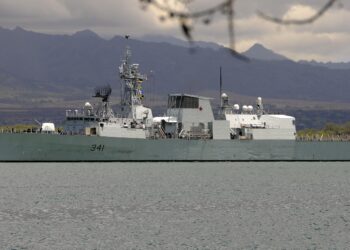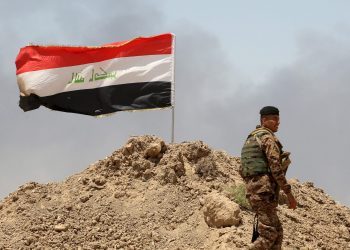Voice of America News, Senior U.S. officials are planning several days of meetings on the Pacific Island of Guam next month to discuss the expansion of the US military presence on the island. The plan, including the transfer of 8,000 U.S. Marines from Japan and expanded use of the island's air force base, is a key element in the U.S. effort to strengthen its military presence in the region, in part to balance China's military expansion.
When you look at a map of the Pacific, it's not hard to understand what the U.S. Air Force command in the region calls the Strategic Triangle – Alaska, Hawaii and Guam.
“It is in fact the centerpiece of how we will look to do America's business from American soil,” said General Paul Hester, commander of the U.S. Air Force in the Pacific and Indian Ocean areas.
“It you want to look for unobstructed operations that American may want to do, there is no place that is deeper penetrating into the western Pacific, under an American flag, than in Guam,” he said.
And General Hester says there is much the US military is doing, and wants to do, in the Pacific for which expanded capabilities on Guam would be helpful. He says those range from training to disaster relief, and also include the projection of American power in order to influence the region's security environment. For Professor David Lampton of Johns Hopkins University, a key element of that is balancing China's military buildup.
“The countries around China see this growth and want some reassurance,” said David Lampton. “And, historically, a U.S. presence in the region has been an important reassuring element to countries like Vietnam, now, certainly Indonesia, the Philippines, and so forth. So I think it is very important for the United States to have a capability to, let's say, moderate the anxiety that China's neighbors feel, and that frankly they feel about, in some cases, Japan as well.”
But Professor Lampton says that involves walking what he calls a 'tightrope,' because, he says, every U.S. move to further improve its military posture in Asia can influence China to continue expanding its military capability.
General Hester, the U.S. Pacific Air Force commander, says expanded use of Guam and other enhancements in American military capability in the Pacific are not necessarily directed at China, or at North Korea. Rather, he says, they are part of an effort that began after the fall of the Soviet Union to refocus U.S. military priorities for the post-Cold War world.
“As America resets itself, it's not always based on a threat as a pure answer to the question, but it is based on where are America's interests going to grow, and where are those places that we need to be a part of, to provide stability, to ensure the revitalization and the increased growth of our own economy,” noted General Hester.
General Hester says that clearly means enhancing the U.S. military presence in Guam and elsewhere in the Pacific and Indian Ocean areas to ensure access to two of the world's largest and fastest growing economies – China and India – and to try to ensure that they develop cooperative relations with the United States, rather than adversarial ones.
“Suddenly you realize that you've got one third of the world's population living in the Pacific in two countries,” he said. “Therefore, America needs to be out here as a partner with them, growing with them, working with them for stability.”
At Johns Hopkins University, Professor Lampton likes the idea of increased U.S. military capability in Guam, as long as it's not so much that it contributes to instability, rather than stability.
“I think the real issue is how much of a presence do we put there because all of the countries of Asia do not want to be forced to choose between the United States and China,” he said. “They want to be able to gain benefits from both. And therefore, these countries are looking for the United States to be reassuring on the one hand, but not provocative on the other.”
And the professor also notes that adding military capacity to Guam provides a more dependable base of operations than a base in a foreign country would.
Just how much U.S. military buildup there will be on Guam is the subject of several days of meetings on the island next month involving senior local officials and the deputy commander of all U.S. forces in the Pacific. They are expected to discuss issues including housing for the marines, increased flight operations at the air force base and the need to improve the island's roads and supplies of power and water. The project is expected to take several years.
Taiwan detects 24 Chinese aircraft as Canadian ship transits waters
Taiwan said it detected 24 Chinese military aircraft near the island on Sunday as a Canadian warship passed through the...









